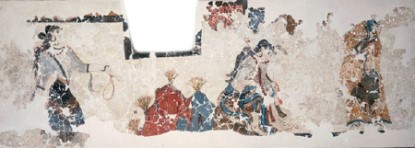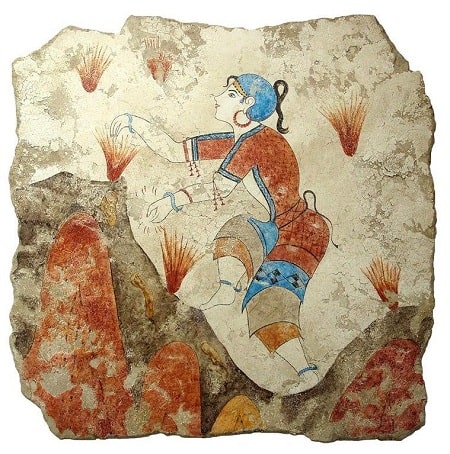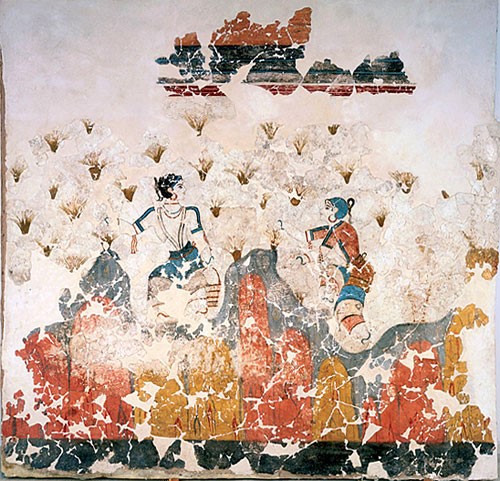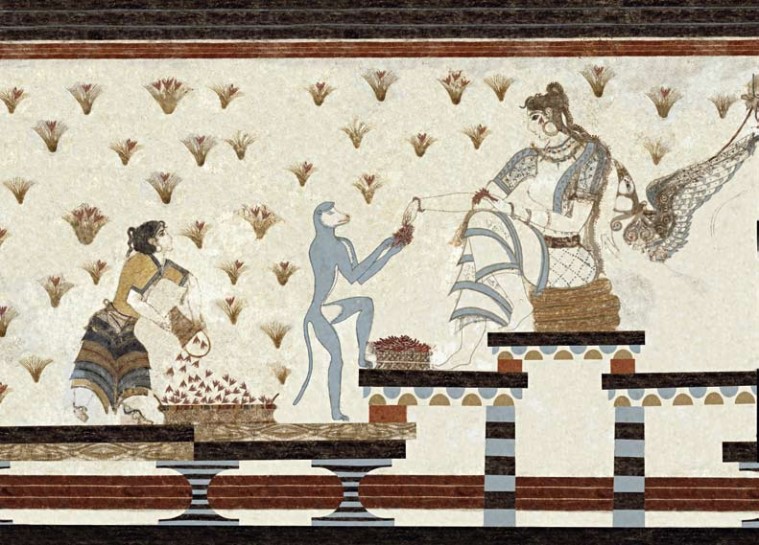“As Dawn prepared to spread her saffron mantle over the land, Zeus the Thunderer gathered the gods to the highest peak of many-ridged Olympus and spoke to them while all listened.”
Saffron, the Sacred Flower of the Ancient Past

Saffron crocus was admired in Greek mythology and poetry. Homer praised “the saffron moon” and slept Zeus on a bed of saffron, lotus, and hyacinth blossoms. Saffron water was sprinkled on theatre benches, the floors of banquet halls were covered with saffron leaves, and cushions stuffed with saffron blossoms. Its color symbolized loyalty until it was seized by the hetairai, the mistresses of Athens and Corinth.

Theophrastus was fascinated by the saffron-colored countryside of Greece in the fourth century B.C., and he noted that the scent of saffron, which varied more than any other characteristic of the plant, was purest at Gyrene. saffron was sprinkled in the city’s streets when Nero entered Rome.

Many different legends relate to the fantastic origin of the crocus. In one, the crocus sprang from the heat of Zeus and Hera disporting themselves on a grassy bank. In a more botanical story, a young man named Krokos died of unpaid love for the shepherdess Smilax and crocuses grew from his grave!
In another story it is said that Crocus, one of the friends of the god Hermes, was hurt by him during a disc throw. Three drops of blood from his head fell on the centre of a saffron flower, and thus the three stigmas of the saffron flower grew and were named Crocus.
For some time, the Greek island of Santorini, known to the Minoan civilisation as Thera, was considered the source of wild saffron because of a series of wall frescoes unearthed there in the Akrotiri settlement.
Encapsulated and preserved in volcanic lava and ash from a late Bronze Age volcanic eruption on the island, the wall paintings depict women and monkeys picking saffron under the guidance of a goddess.


